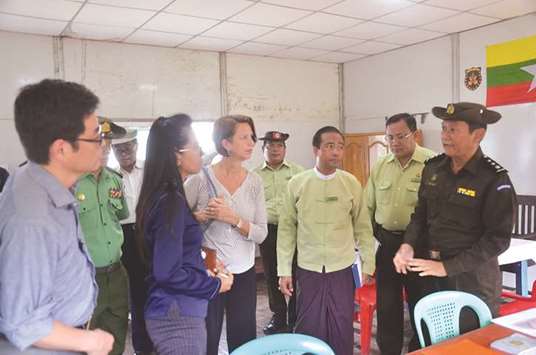International aid agencies and Bangladesh authorities are struggling to protect hundreds of thousands of Rohingya refugees against deadly monsoon landslides and floods ahead of the peak rainy season expected in July.
Just a few days of downpours and storms at the onset of monsoon earlier this month triggered landslides and floods, killing two and injuring several refugees, as well as damaging thousands of bamboo-and-plastic shelters built on the slopes of muddy brown hills.
The shelters house most of the hundreds of thousands of Rohingya Muslims who have fled to Bangladesh since last August to escape a military crackdown in neighbouring Myanmar.
The United Nations has called the campaign a textbook example of “ethnic cleansing”
- a charge Myanmar denies.
The UN High Commissioner for Refugees (UNHCR) has said the number of Rohingya refugees now in Bangladesh has swelled to over 720,000.
They are living in sprawling and congested refugee camps around the town of Cox’s Bazar on the Bay of Bengal, which records Bangladesh’s highest rainfall and is prone to cyclones.
Aid and government officials have been working for several weeks to help build drainage systems, strengthen shelters, and create better access routes.
But they say they are facing challenges in moving refugees to safer areas and with the monsoons having already begun, it’s become a race against time.
“The possibility of relocating all of the ‘at risk’ Rohingya population is very limited and challenging,” said Caroline Gluck, a representative for the UNHCR in Cox’s Bazar.
She put the number of ‘at risk’ refugees at about 200,000, adding: “We are not able to move people as quickly as we want.”
The Inter-Sector Coordination Group (ISCG), which represents the work of aid agencies on the ground, says 45,000 refugees are living in “highest risk” areas but only about 15,000 of them had been relocated until June 10.
About 7,000 more are expected to be moved to safer areas by the end of June, the ISCG said in a June 13 weekly update report.
But that would still not complete the relocation in time for the peak rains, which usually come to this part of the country in early July.
Part of the problem has been finding suitable land and constructing shelters and facilities on it, officials say.
“It takes a lot of time and manpower trying to move such a large number of people...to flatten the hills and make them suitable for relocating,” said UNHCR’s Gluck.
Despite months of preparation and contingency plans, damage caused by the brief rain spell earlier this month has many worried about the impact of much harsher weather expected in the coming weeks.
The ISCG has also said there is a lack of structures to which refugees can move to during high winds or cyclones, which are common in the region.
“It was quite a shock just how much things deteriorated in a short space of time,” said UNHCR’s Gluck, adding that coordination between the government and aid agencies had proved to be key.
With refugees continuing to arrive into Bangladesh from Myanmar, resources at the camps continue to be stretched, posing a challenge, she said.
At least 9,286 refugees have arrived in Bangladesh since January 2018, with almost 250 arriving in the two weeks to June 4, the UNHCR said in an operational update earlier this month.

UN Special Envoy to Myanmar Christine Schraner Burgener (fifth right) meeting Myanmar immigration officer, right, and local officials at a processing centre for Rohingya refugees in Maungdaw district close to the border of Bangladesh.


